By John Sergeant, Convenor, Bays and Foreshores Subcommittee, Bulletin 2024/8, October
The changing foreshore
The shoreline of the waterways to the north of Glebe has changed markedly since European settlement. This process of change has been more or less continuous over almost two and a half centuries.
However, it could convincingly be argued that there has never been a period of more rapid and profound change than at present. Here are some of the things that are transforming the bays and foreshores of Glebe and Forest Lodge:
- The adaptive reuse of the former White Bay Power Station (photo 1);
- The development of the Bays Precinct to include offices and high-rise housing;
- The Rozelle interchange, with its shared pathways, parkland … and traffic;
- The Bays and Pyrmont Metro stations at either end of the Glebe foreshore, increasing access from greater Sydney to this beautiful part of the harbour;
- The New Sydney Fish Market, which will surely become a world-class tourist, shopping and dining destination (photo 2);
- The creation of the Bank Street Parklands where there is currently no foreshore access and an unwholesome collection of unsightly warehouses;
- Increasing housing density in Pyrmont–Ultimo, notably but not solely on the site of the existing fish market, which is slated for high-density residential development;
- The continuous shared path and parkland around Blackwattle Bay and on through to Pirrama Park and towards the City, once the New Sydney Fish Market is opened, the old site redeveloped and the Bank Street Park completed;
- Uncertainty over the future of the working port at Glebe Island, the Rozelle Marina and, of course, the historic Glebe Island Bridge, a potential asset for pedestrians and cyclists that is simply being demolished by neglect.
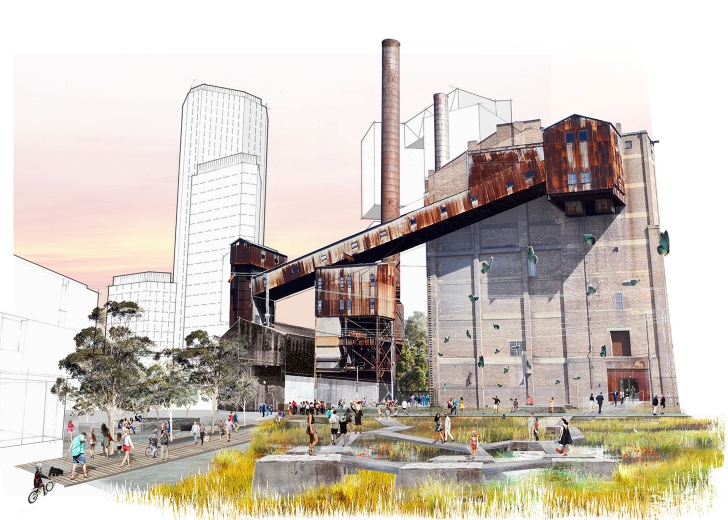
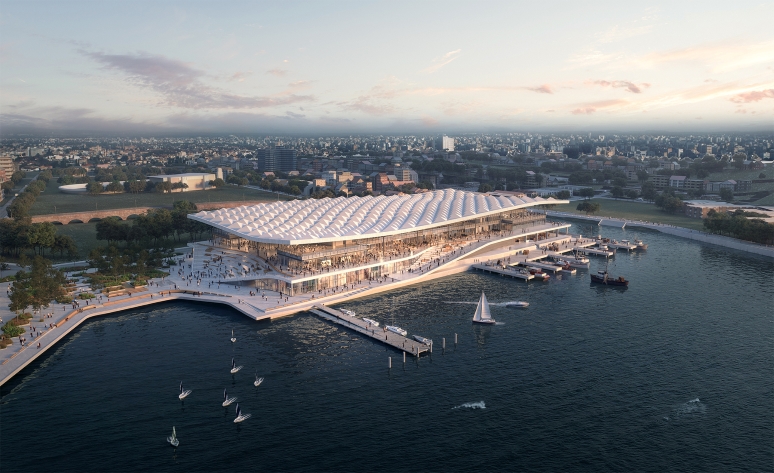
The Glebe Society is engaged in all this change, advocating for development that enhances the quality of life of existing and new residents and which is sensitive to the character of our suburb, preserving what is special, both in the remaining natural environment and in our built heritage.
We advocate for best practice active, passive and public transport solutions to cater for the increased numbers of residents and visitors that will result from all this change. We advocate for affordable housing, knowing that one of the things that makes this area unique in Sydney is its socioeconomic diversity. Put simply, we use our voice to help ensure that things are done well, so that change around the bays and foreshores makes this wonderful corner of the world an even better place. One area of recent advocacy has been the safety of the shared path.
Focus on Blackwattle Bay Park shared path
The Glebe Society has invested much of its energy over previous decades in securing, with the cooperation of the then Leichhardt Council and, more recently, the City of Sydney, a continuous area of public land along the Glebe Foreshore (photo 3). This is now an asset to the community.
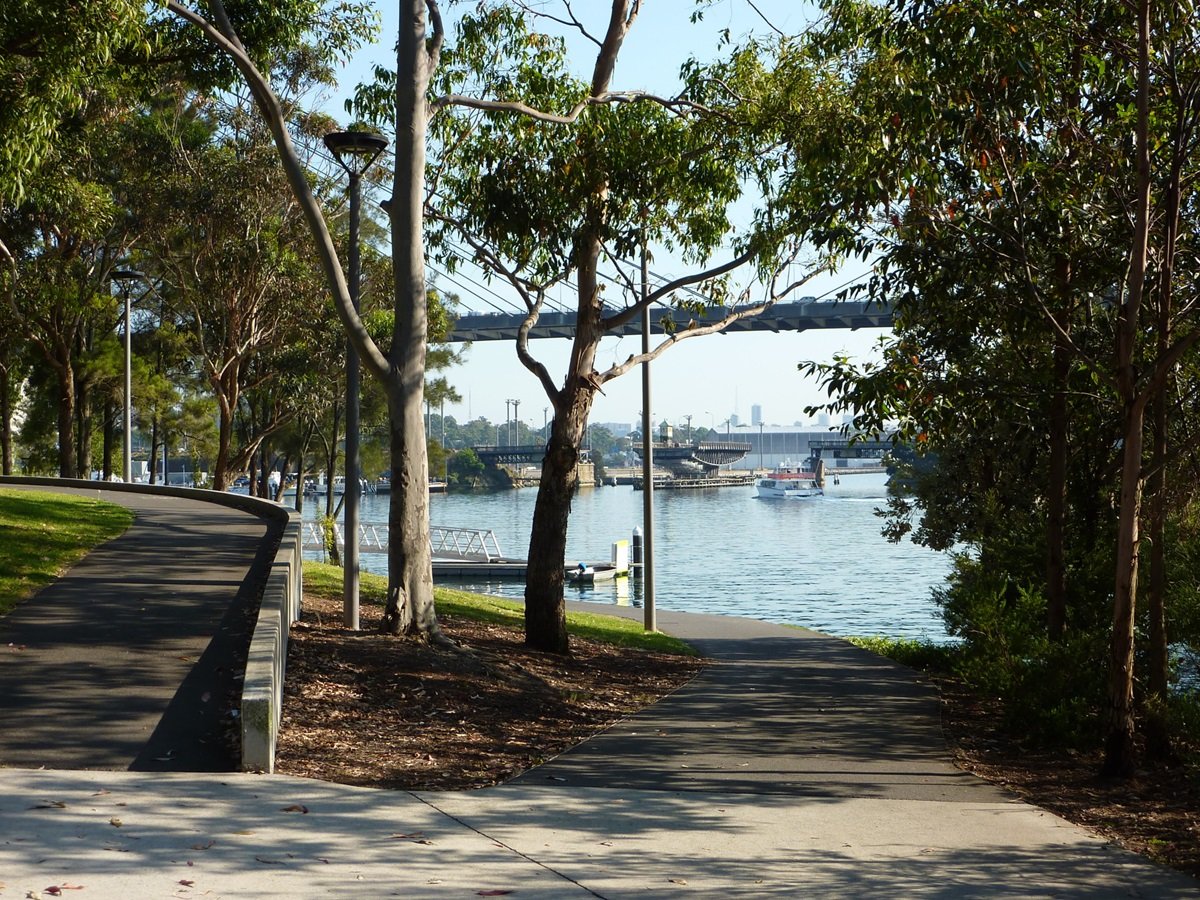
The City of Sydney is to be congratulated for its recent work on maintaining the seawalls, retaining walls, timber walkways and bridges that form the shared pathway through the Park. Sadly, the lighting has been neglected, as has the presence of invasive weeds in what were once beautiful beds of endemic native vegetation.
Pleasingly, this parkland and the shared pathway that runs through it enjoy high and increasing levels of patronage. Existing users of Blackwattle Bay Park include a mix of local residents and domestic and international visitors to Sydney. Every one of the developments around the bays and foreshores is likely to cause increased patronage of the shared foreshore path, which is already crowded and dangerous at times.
Increased usage of Blackwattle Bay Park and its shared path is, of course, desirable. This beautiful public land is there to be enjoyed. That was why the Glebe Society fought so hard for so long to create this unique ribbon of parkland.
However, there are already safety issues and the situation will worsen as numbers increase. Moreover, based on the provision of high-density housing and the opening of the New Sydney Fish Market, we expect the numbers of international visitors and recent immigrants to increase in absolute and relative terms. Absent any guidance, it is unreasonable to expect such users to keep left or to move to the left to avoid collisions.
Currently, there is a mix of pedestrians ranging from the very young to the elderly, dogs both on and off leads, cyclists and scooter riders (some with electric power), as well as prams and wheelchairs. Many people wear headphones. Some are understandably focused on their children, their dogs or indeed, the views. Some are stationary, some moving. This mix of users, moving at different speeds, with varying levels of attentiveness, and without a uniform tendency to keep left, creates conflict and danger. Courtesy, consideration and goodwill are the norm but there are frequent exceptions and occasional injuries. No one group is to blame. Rather, it is the unregulated mix of users that creates a safety issue.
This is a design challenge. As in all shared facilities, there is an opportunity to use best practice solutions to improve safety for all users and make the shared path fit for purpose. The Glebe Society will continue to advocate for
- directional shared path markings, a centreline and shared path signage,
- widening narrow sections where possible,
- separating cycle traffic from pedestrians where the path width (or a second path) makes this feasible, and
- reminders to re-attach dog leashes as one leaves off-leash areas
These measures are already in place in other areas of the City of Sydney as well as throughout many other LGAs and, most notably, in Canberra, which has an excellent shared path network. Simply painting a centreline on the Blackwattle Bay Parkland shared path will deliver a considerable safety dividend, just as it does in Darling Harbour (photo 4) and Cockle Bay (photo 5), where narrow paths have been appropriately marked and signposted.
Here is an example from another ribbon parkland in Sydney with a relatively narrow path: the M5 shared pathway (photo 6).
None of these pathways assumes a good knowledge of English. Yet they encourage safe and respectful sharing of a narrow space. For some reason, the City of Sydney has been unwilling to consider this simple, inexpensive and effective measure for Glebe. Perhaps the newly-elected Council will prove to be more receptive.
If you are interested in contributing your voice to the many issues that affect Glebe and Forest Lodge’s bays and foreshores, then please contact John Sergeant, Bays and Foreshores Convenor at bays@glebesociety.org.au.



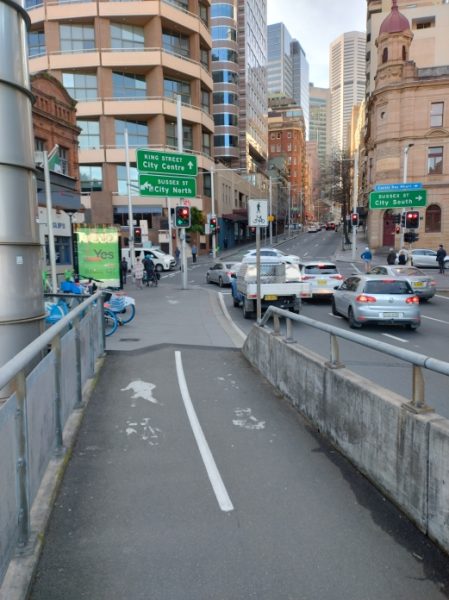
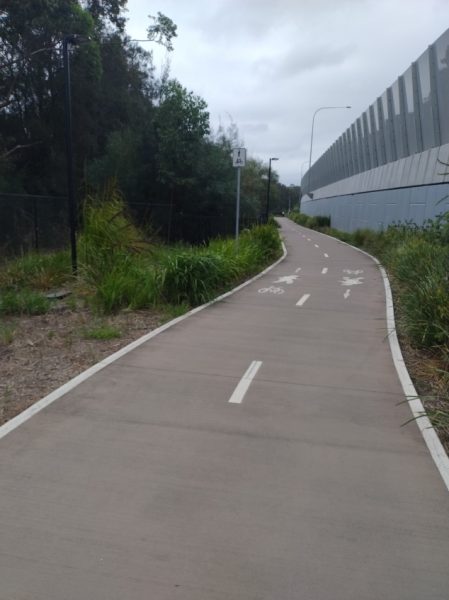





One comment. Please add yours.
You describe the problems well with one exception. I think you are calling for a centre line and keep to left signage. The problem is that off-leash dogs don’t keep to the left.
The idea of this narrow busy pathway being off-leash is crazy. And it is understandably being increasingly publicised among on-line dog groups and attracting dog owners from elsewhere is Sydney. So the dog problem is getting worse. There is plenty of open space in the area which is more suitable for off-leash.